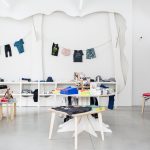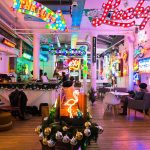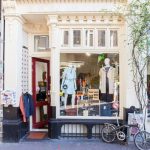
Dubai, with its luxurious skyline and bustling streets, has increasingly become a hub for art lovers and connoisseurs from around the globe. A blend of local and international culture, this vibrant city offers a plethora of opportunities for art businesses. If you’re looking to open an art gallery in Dubai, this comprehensive guide will help steer your journey.
1. Understand Dubai’s Rich Art History
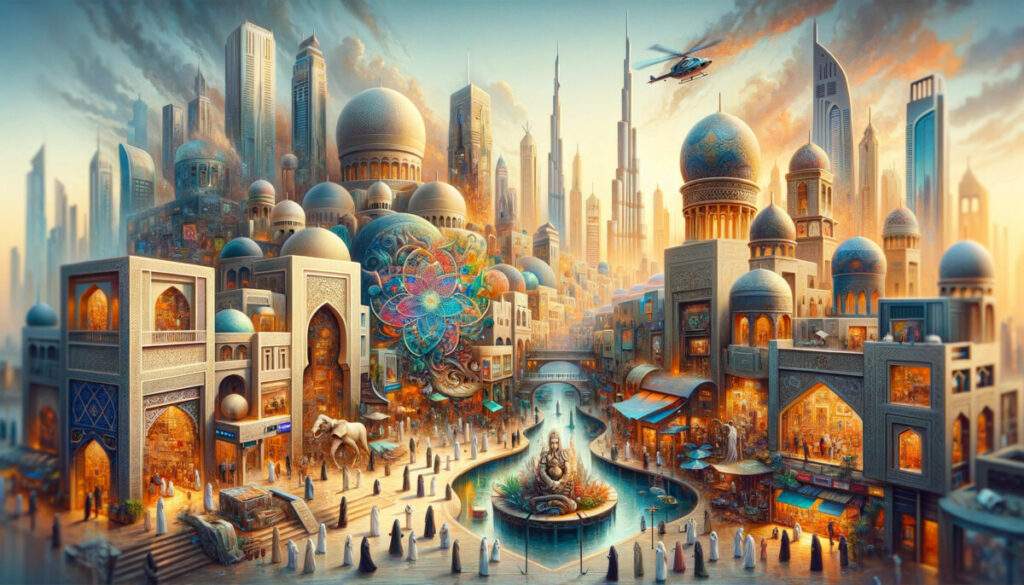
To successfully establish an art gallery in Dubai, one must first delve into its rich art history. The city has a beautiful tapestry of traditional and contemporary art that tells the story of its rapid transformation. Several art galleries in Dubai, such as the renowned Ayyam Gallery, Cuadro Fine Art Gallery, and the celebrated Opera Gallery, have contributed significantly to this narrative.
2. Embrace the Diversity
Dubai is a melting pot of cultures, home to a multitude of nationalities. This diversity should be reflected in the art you display. From Central Asia to South Asia, from the broader Middle Eastern regions to African artists, the gallery can provide a platform for a myriad of voices waiting to be heard.
3. Ideal Location and Infrastructure
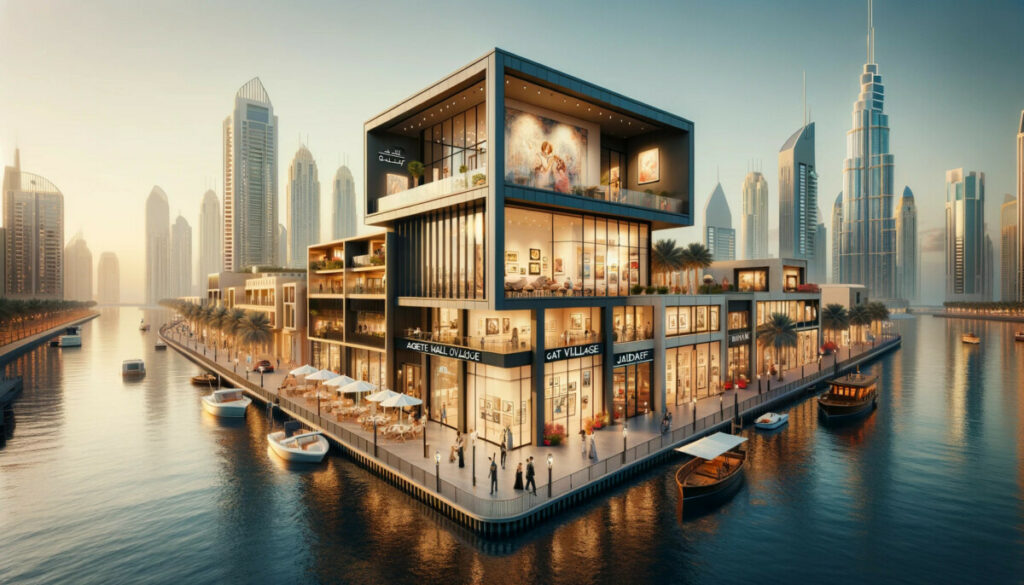
An art gallery’s location can significantly impact its success. While Alserkal Avenue remains a favorite among many, other areas like Gate Village in the DIFC, Jaddaf Waterfront, and Bur Dubai are also gaining traction among art enthusiasts. These locations are not just about the footfall but also the ambiance, accessibility, and the neighboring businesses which can complement your gallery.
When considering the location for your art gallery in Dubai, exploring diverse neighborhoods can be key to finding the perfect spot. Dubai Marina, with its vibrant atmosphere and upscale demographic, offers retail spaces that could be ideal for an art gallery. These spaces are not only in a high-footfall area but also surrounded by a community appreciative of art and culture. For current listings of retail spaces in Dubai Marina.
On the other hand, Downtown Dubai is synonymous with luxury and style, making it a splendid choice for a high-end art gallery. Showrooms in this area can provide the right ambiance and clientele for your gallery. Discover available showrooms in Downtown Dubai.
4. Foster Relationships with Established Artists
While showcasing new artists is essential, having collections from established names can be a crowd-puller. Artists like Abbas Akhavan, Farah Al Qasimi, and Joe Black have significant recognition in the Dubai art scene. Collaborating with such names will give your gallery an initial push and credibility.
5. Regular Exhibitions and Themes
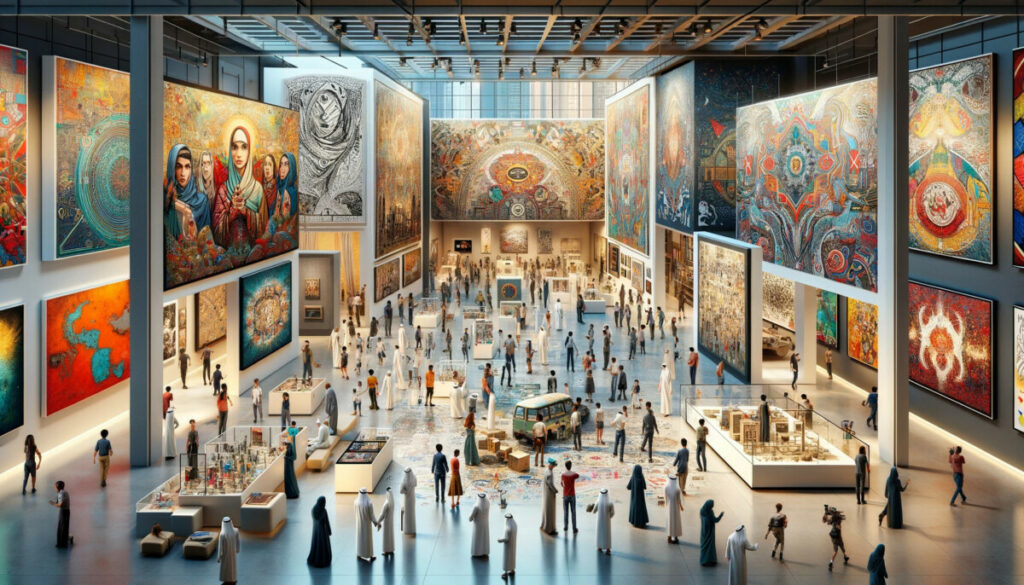
Apart from the regular collection, host monthly or bi-monthly exhibitions focusing on contemporary themes, reflecting the current socio-political environment of the Middle East, Central Asia, and global events. Engage with the local communities, schools, and institutions for collaborative exhibitions. Also, consider showcasing different art forms, from traditional oil on canvas to modern digital art.
6. Legal Framework and Business Model
Dubai has specific regulations and licenses for art businesses. Collaborate with a local consultant to understand the nuances of setting up a business, the required capital, and the potential returns. Planning your financials and understanding the market dynamics is crucial for the gallery’s long-term survival and success.
7. Active Engagement and Marketing
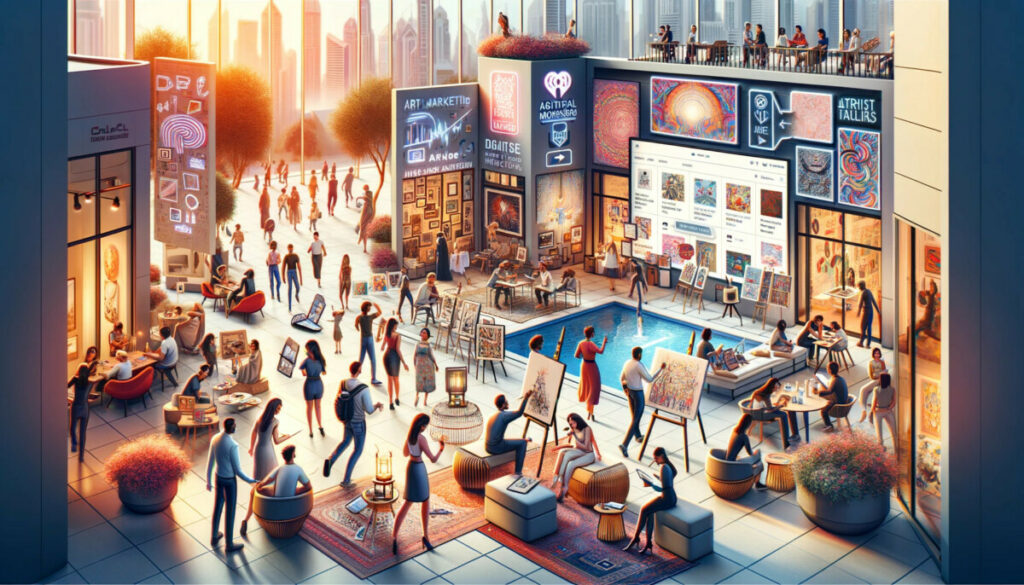
Dubai’s art scene is vibrant and competitive. Engage with your audience by hosting art workshops, artist talks, and interactive sessions. Create a loyalty program for regular visitors and buyers. Embrace digital marketing, utilize social media, and ensure your gallery’s online presence is robust and interactive.
8. Collaborate with Local and International Events
Dubai hosts numerous art events throughout the year, most notably Art Dubai. Participate actively, collaborate with international galleries, and even consider pop-up gallery concepts in international fairs. These collaborations can provide the required exposure and open doors to a broader audience.
Participation in local and international art events is a fantastic way to gain visibility and network within the art community. Al Quoz is rapidly becoming a go-to destination for art lovers, with its eclectic mix of galleries and cultural spaces.
9. Infrastructure and Logistics
Ensure that your gallery is not just an exhibition space but also a place where art enthusiasts can spend time. A cozy café corner, a small art-related bookstore, or even a co-working space can add to the gallery’s appeal. Also, focus on logistics like artwork transportation, insurance, and display infrastructure.
For those galleries requiring unique spaces that combine functionality with aesthetic appeal, considering a showroom with furniture in Dubai can be an excellent choice. These spaces often come pre-designed with an artistic flair, reducing the need for extensive interior decoration. This can be particularly beneficial for temporary exhibitions or pop-up galleries. Explore showroom options with furniture in Dubai.
10. Continuous Learning and Evolution
The art world is dynamic. Continuous learning, understanding global art trends, attending international art fairs, and courses can help you stay updated. Engage with other gallery owners, artists, and critics to gather feedback and implement changes accordingly.
11. The Power of Networking

Dubai’s art scene thrives on relationships and connections. Attend gallery openings, art fairs like Art Dubai, and join local art communities. Networking allows you to collaborate with renowned galleries like Green Art Gallery and Lawrie Shabibi. By forging strong alliances with both local and international artists, you position your gallery for exclusivity with particular artworks and installations.
12. Supporting Emerging Talent

While established artists play a crucial role in attracting a discerning audience, there’s an undeniable charm in discovering and promoting emerging talents. Consider dedicating sections of your gallery to promising artists from regions such as Central Asia, the Middle East, and even those touching contemporary themes. Showcase artists who embody a mix of traditional and contemporary techniques. This will not only give fresh artists a platform but will also demonstrate your commitment to the art community.
13. Cultural Integration and Awareness
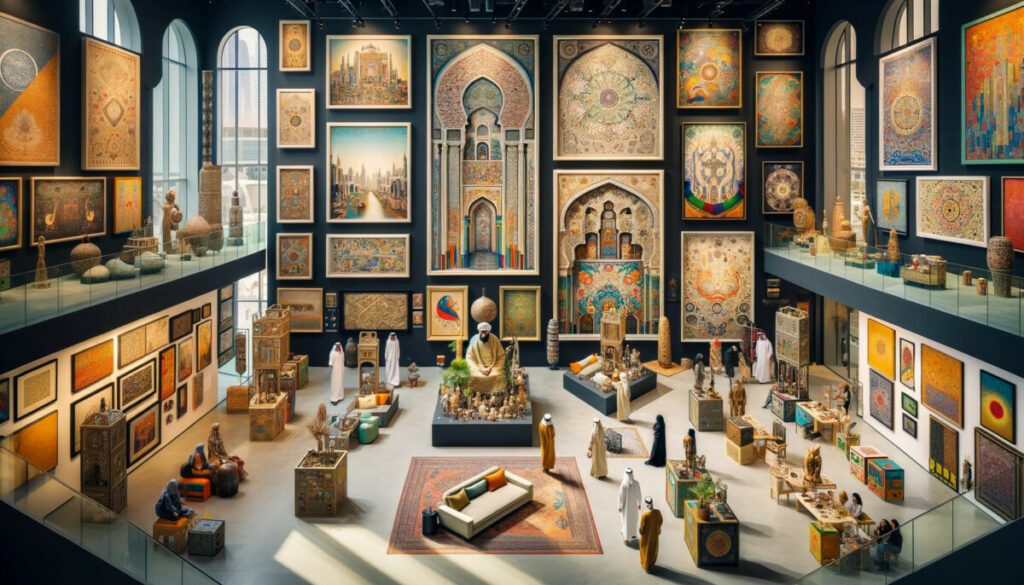
Dubai’s cultural fabric is interwoven with influences from South Asia, the Middle East, and Central Asia. Host culturally themed months, focusing on the works of artists from specific regions. This would be an opportune moment to showcase Lebanese artists, Moroccan artists, and even Palestinian artists, drawing attention to the vibrant Middle Eastern art palette.
14. Curating Experience-driven Events
More than just viewing art, people today are looking for holistic experiences. Host themed nights or curated tours where art enthusiasts can immerse themselves in a specific art form or cultural backdrop. Organize sessions where artists like Hassan Hajjaj or Blek Le Rat can interact directly with the audience, offering insights into their work and artistic journey.
Creating immersive art experiences often requires spaces that are not just visually appealing but also versatile. A loft space in Dubai can provide the perfect backdrop for such events, offering a blend of urban chic and spacious layouts ideal for interactive art events, workshops, or themed exhibitions. To discover loft spaces available for rent in Dubai that can elevate your next art event.
15. Digital Integration and Virtual Galleries

The post-pandemic era has seen a surge in virtual events. Offer virtual tours of your gallery, ensuring those from around the world can experience the art pieces you have, without geographical constraints. This digital integration ensures a broader reach and caters to international art lovers who may be interested in purchasing artworks from Dubai-based galleries.
16. Adaptability is Key
The art world, much like any other domain, is prone to shifts and changes. Whether it’s a change in popular art medium, from oil on canvas to digital art, or a shift in the narrative of artworks, being adaptable ensures your gallery remains relevant. Regularly reassess your gallery’s collection, layout, and partnerships to reflect the current art scene’s tone and direction.
17. Focus on Art Education
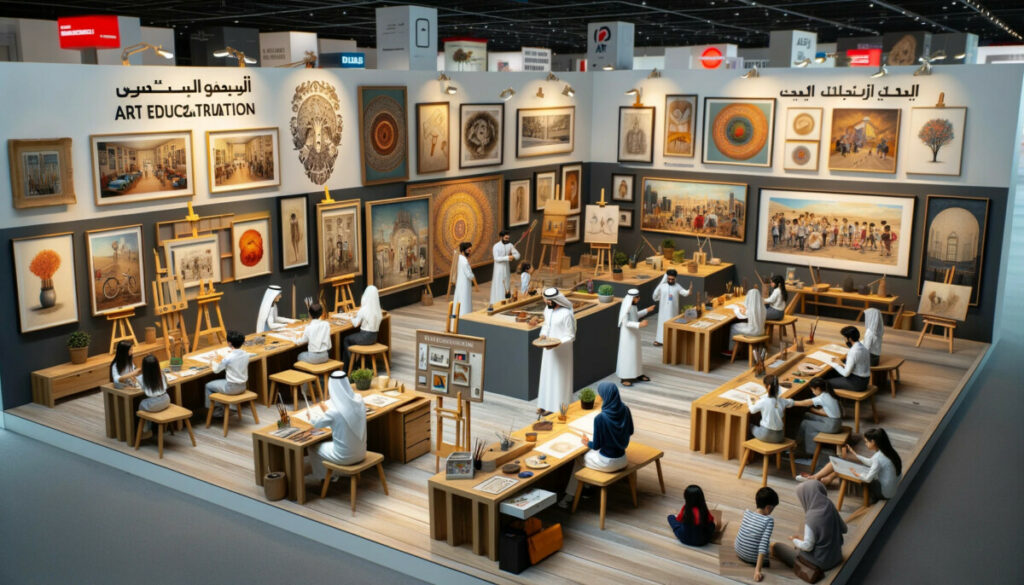
Apart from selling art, focus on the educational aspect. Offer workshops on various art techniques, art history sessions, and even courses on art appreciation. Partnering with institutions or hosting school trips can instill an appreciation for art in the younger generation and foster future clientele.
18. Diversifying Revenue Streams
While selling artworks will be your primary revenue source, diversify by offering art leasing services to corporates or renting out your space for private events. Collaboration with cafes or bookstores can also offer additional revenue streams, making the gallery financially resilient.
19. Ethical Sourcing and Authenticity
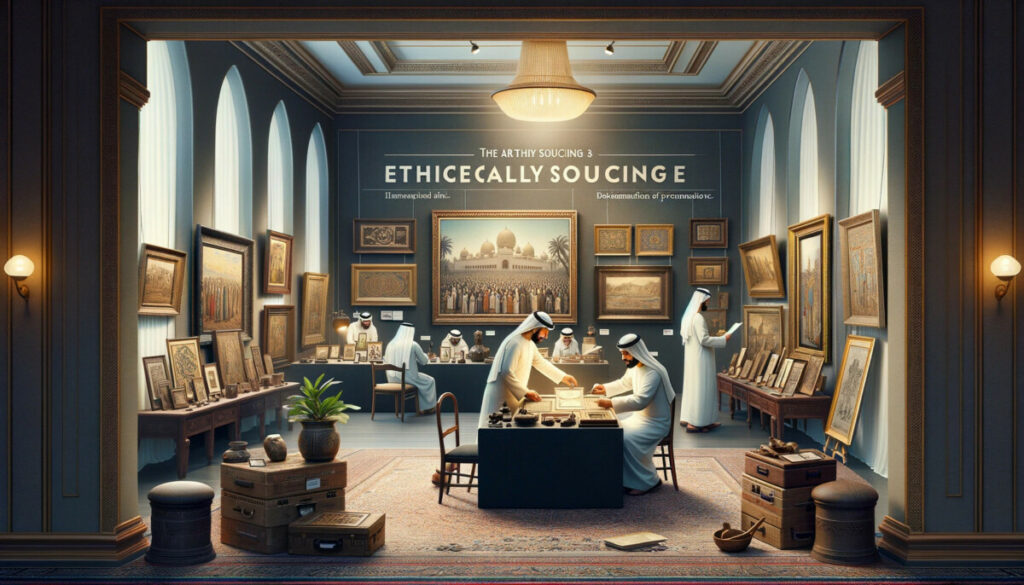
In the art world, authenticity is paramount. Ensure that all artworks are ethically sourced and come with proper provenance. Collaborate with experts to validate the authenticity of artworks, especially those with historical significance.
20. Embracing Sustainability
Sustainability is a growing concern in various industries, and the art world is no exception. From the materials used in artworks to the operational aspects of the gallery, adopting eco-friendly practices can set you apart and appeal to a conscious audience.
Final Thoughts
In the vibrant and ever-evolving art ecosystem of Dubai, there are ample opportunities and challenges. A successful art gallery doesn’t merely showcase beautiful artworks but acts as a cultural beacon, reflecting the city’s essence and global art currents. With dedication, adaptability, and an ear to the ground, your art gallery in Dubai can become a landmark, cherished by artists and art enthusiasts alike.
- How Your Business Can Benefit from the Right Office Space in Dubai - November 14, 2023
- How to Open a Successful Art Gallery in Dubai - November 14, 2023
- How to Choose the Perfect Showroom Space in Dubai - November 14, 2023

